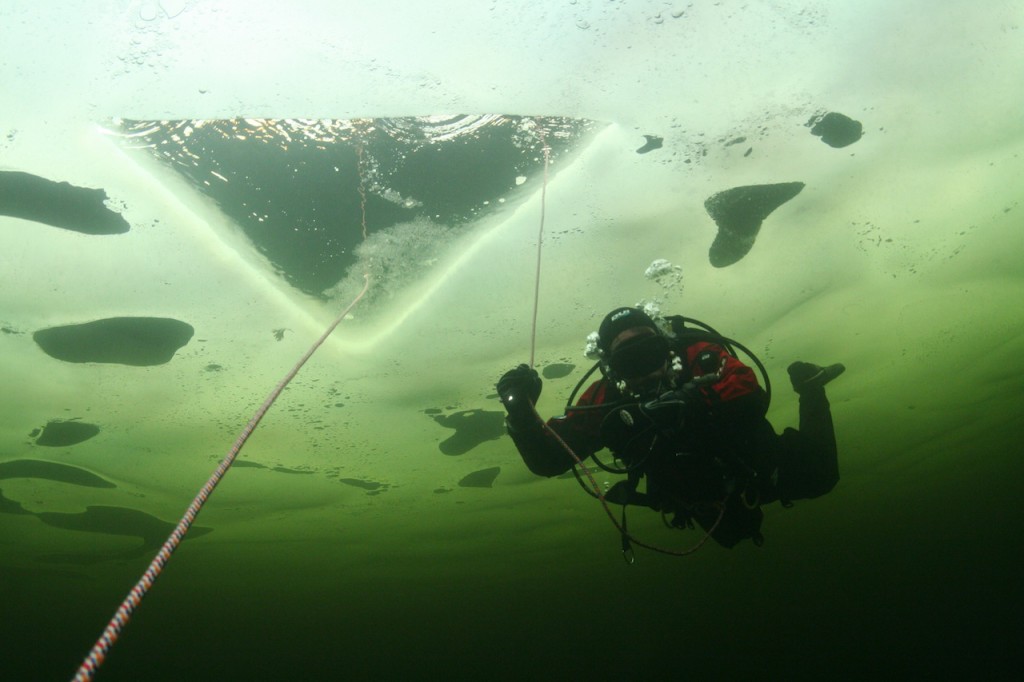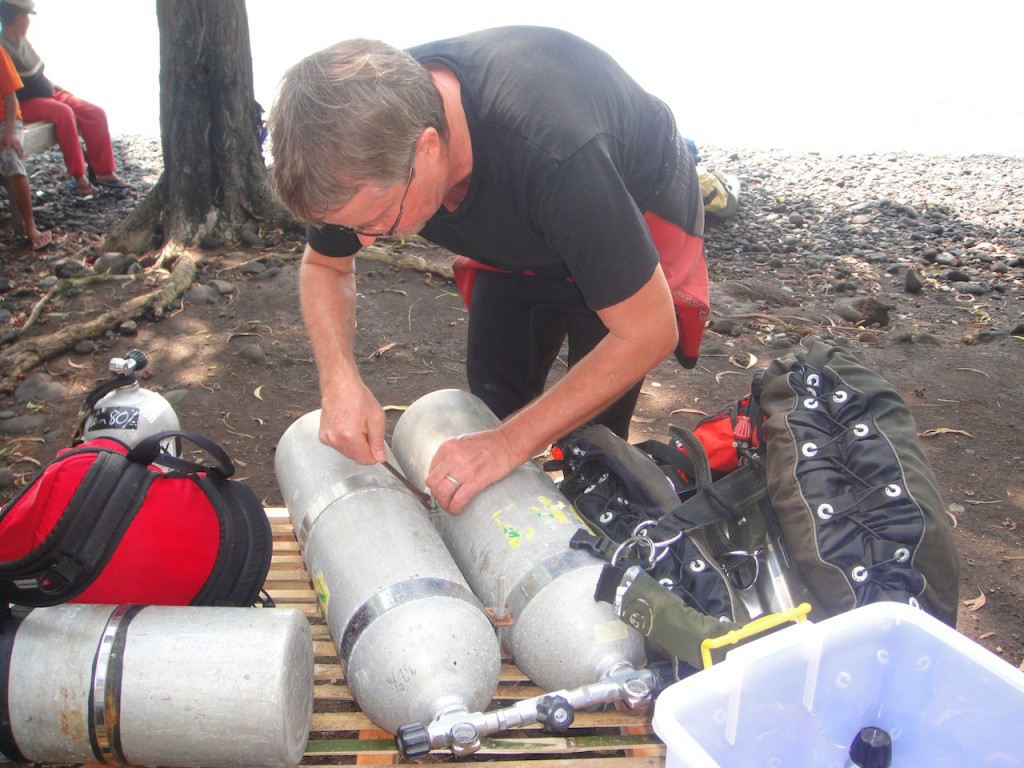News
Beware of Backsliding
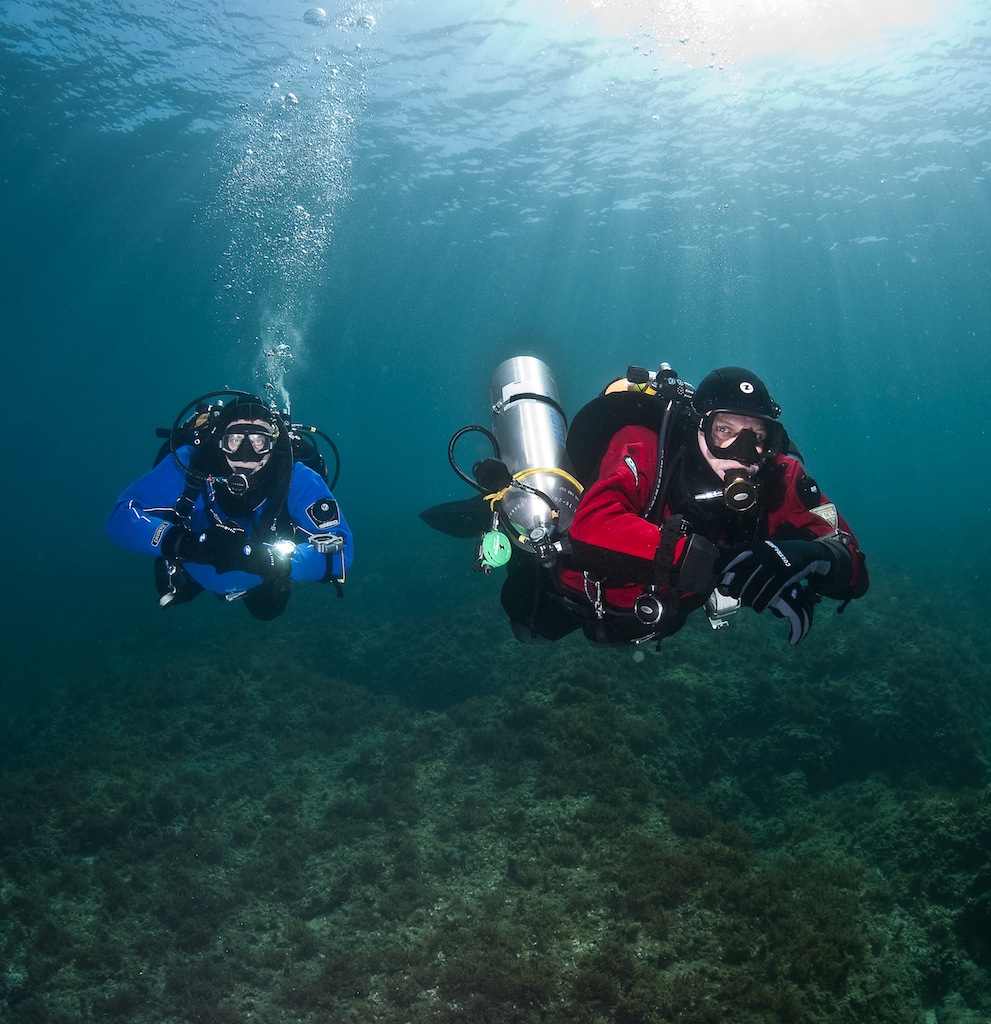
Earlier this year I was invited to deliver lectures at the Oztek and ADEX shows in Sydney and Singapore respectively. One of these was on “What Makes a Good Technical Diver” and I based my talk on the Scuba Confidential chapters “To the Extreme” and “Accident Analysis.” Because my audience, particularly at Oztek, was very experienced, I found myself extrapolating on some of the themes in the book. One of the topics I touched on that received a very positive response was the danger of new generations of divers not learning from their predecessors and consequently risking accidents that were entirely avoidable. I called this tendency “backsliding” and gave a few examples to explain what I meant.
Recently I was approached by a pair of technical divers and asked for advice on an incident that had befallen them on a wreck dive. One had experienced what seemed to be have been an oxygen toxicity hit and had needed to be rescued by the other, who had blown off deco to bring him up after he had convulsed and lost his regulator at 6m (20ft.) I asked for the details of the dive and they told me the wreck was on sand at 50m (165ft), they had been diving on air and carrying deco stages of 50% and O2. They had done a little less than 30 minutes on the wreck and on ascent had switched to EAN 50 at 20m and O2 at 6m. After only a couple of minutes at 6m the diver convulsed. Both survived the dive without any residual issues apart from a crisis of confidence.
I first asked if they were sure they were really at 6m when the convulsion occurred and they assured me they were. I told them that there was no history of a diver having had an oxygen toxicity event after such a short time on a PO2 of 1.6 in very shallow water. Therefore, the most likely cause of the incident was that the diver who had convulsed had made a mistake and switched to his O2 at 20m rather than his 50%. The diver said he was sure this wasn’t the case and recounted a whole list of things he had done that made this impossible. However, he admitted he had been up late mixing gas the previous night and had only had a couple of hours sleep as he needed to wake before dawn to drive to the dive site.
The Main Point
I leave it up to you to draw your own conclusions but to my mind the debate over whether the diver had got his cylinders mixed up or not is just a side issue here. The main point is that it was completely unnecessary for these divers to have been carrying two deco gasses in the first place. Either, EAN 50 or the O2 would have done the job just fine and having one gas would have had hardly any effect on the length of time they spent on ascent. They were in calm 30-degree water in the middle of the day after all: a few minutes extra on their hang were hardly going to be a safety issue.
In the early days of technical diving, breathing the wrong gas at the wrong depth was a common problem. Some divers survived; many did not. Labelling and other conventions were established to reduce the chance of this happening. However, human error being what it is, we figured at the time that the best way to make sure you do not switch to the wrong deco cylinder at depth is only to carry one. Except of course when time and safety requirements absolutely insisted that you carry more than one deco gas; for instance if your bottom gas was a hypoxic, helium rich mix.
Back to the Age of Ignorance
This is what I mean by backsliding: a return to practices and procedures that were rejected in the early days of technical diving as being likely to lead to accidents: a step backwards in the evolutionary process either through poor training and ignorance or because divers think somehow that they are too experienced to make mistakes.
Originally, the rise of technical diving coincided with the development of the Internet. Most technical divers happened to be early adopters of the new technology (we are all just geeks deep down!) and this meant that the technical community, though widespread geographically, was closely linked online. So news travelled fast! Especially bad news! Whenever a technical diving death took place, we would pore over the details, not out of morbid curiosity but to see if there were any lessons we could learn or if anything about the accident indicated that commonly adopted procedures might be flawed. When a flaw WAS found, things moved quickly, word passed around, training standards were amended and equipment was modified. This is how our sport developed.
New Ways or Old Ways?
As time passes and new generations of divers embrace technical diving I feel there is a danger that the incidents and accidents that led us to make changes in procedures in the past will be forgotten. Unless newer divers are told why we do things the way we do, there is always the likelihood that they may experiment with new ways that are really just the old ways – old ways that were found to be inherently dangerous so were rejected and replaced by safer ways.
You may think that I am making too much of a relatively minor incident. Unfortunately, divers do not usually tell anyone about their close calls, so this story actually gives us a rare insight that, I believe, is worth dwelling on and sharing. I remember thinking at the time, “I can’t believe that with all we have learned, with all the time that’s been spent over the years trying to improve safety in technical diving, that someone can still manage to get an O2 hit on a short 50m air dive! Where have we gone wrong? How come this sort of thing is still possible?”
More Backsliding
Others examples of backsliding I have seen over the last twelve months or so include: –
- Failing to make a dive plan for a technical dive and letting your dive computer vaguely plan the dive as you go, as per regular no decompression stop sport diving!
- Carrying independent back mounted doubles, one cylinder containing your bottom gas, the other cylinder filled with your deco gas! I don’t know how anyone could think that this is a fresh idea, yet it seems to crop up in different places from time to time as a new generation gets bored of carrying stage cylinders and looks for a lazy way out, not thinking that maybe the lazy divers of previous generations have already passed this way. This is a really easy way of breathing the wrong gas at the wrong depth, as many have found to their cost. It also, of course, completely takes away your bottom gas redundancy.
- Planning overhead environment dives using the rule of thirds but with only a single cylinder and K valve – again with no protection against an air supply failure and showing a complete misunderstanding of the gas rules.
- Diving a NITROX mix trusting the dive operator’s analysis and not checking the mix yourself. This one is becoming pretty much universal, especially on liveaboards.
I recognise that whenever I preach the virtues of past practices I risk coming across as an old fart bemoaning the folly of young people of today and insisting that “back in the day” we knew better. Nothing could be further from the truth. Progress is essential: we are nowhere near a perfect world as far as diving safety is concerned. The fact that every year we lose another friend or two to this sport is ample evidence of that.
Of course, a good technical diver does not remain so entrenched in the ideas of the past that he blinds himself to the opportunities of the future. But repeating the mistakes of the past is not the way forward.
Blogs
EXCLUSIVE: Jeff Goodman interviews Mark Spiers, CEO of New Scuba Diving Training Agency NovoScuba

In a video recorded exclusively for Scubaverse.com, Jeff Goodman interviews Mark Spiers, CEO of new scuba diving training agency NovoScuba.
Find out more about NovoScuba at www.novoscuba.com.
News
Charting New Waters; NovoScuba Goes Global with the Launch of their Revolutionary Dive Training Agency!
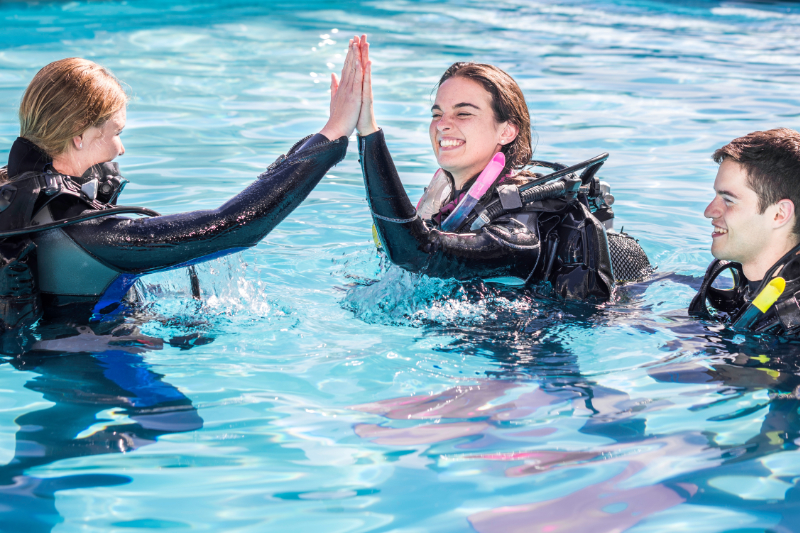
Discover a New Era of Dive Education: NovoScuba Brings Innovation to the Surface! Fully ISO Certified and Equipped with Cutting-Edge Technology.
 With a combined experience spanning over a century in the diving industry, a team of accomplished dive store owners, managers, and professionals unveils NovoScuba, a ground-breaking dive training agency poised to redefine the benchmarks of underwater education. Launching in May 2024, NovoScuba promises a revolutionary approach to dive training. Their vision is to make diving accessible to everyone, share success within the dive community and emphasise positive interactions with the planet.
With a combined experience spanning over a century in the diving industry, a team of accomplished dive store owners, managers, and professionals unveils NovoScuba, a ground-breaking dive training agency poised to redefine the benchmarks of underwater education. Launching in May 2024, NovoScuba promises a revolutionary approach to dive training. Their vision is to make diving accessible to everyone, share success within the dive community and emphasise positive interactions with the planet.
NovoScuba’s global debut marks a significant milestone in the dive industry. Driven by a vision to challenge convention and harness the power of technology, NovoScuba aims to revolutionise the dive training landscape through its innovative business model, which is digitally native, making it the most technologically advanced dive training agency to date.
“We recognised the need for change in the dive training industry and saw an opportunity to leverage technology, and redefine existing business models to create something truly innovative,” said Mark Spiers, CEO of NovoScuba.
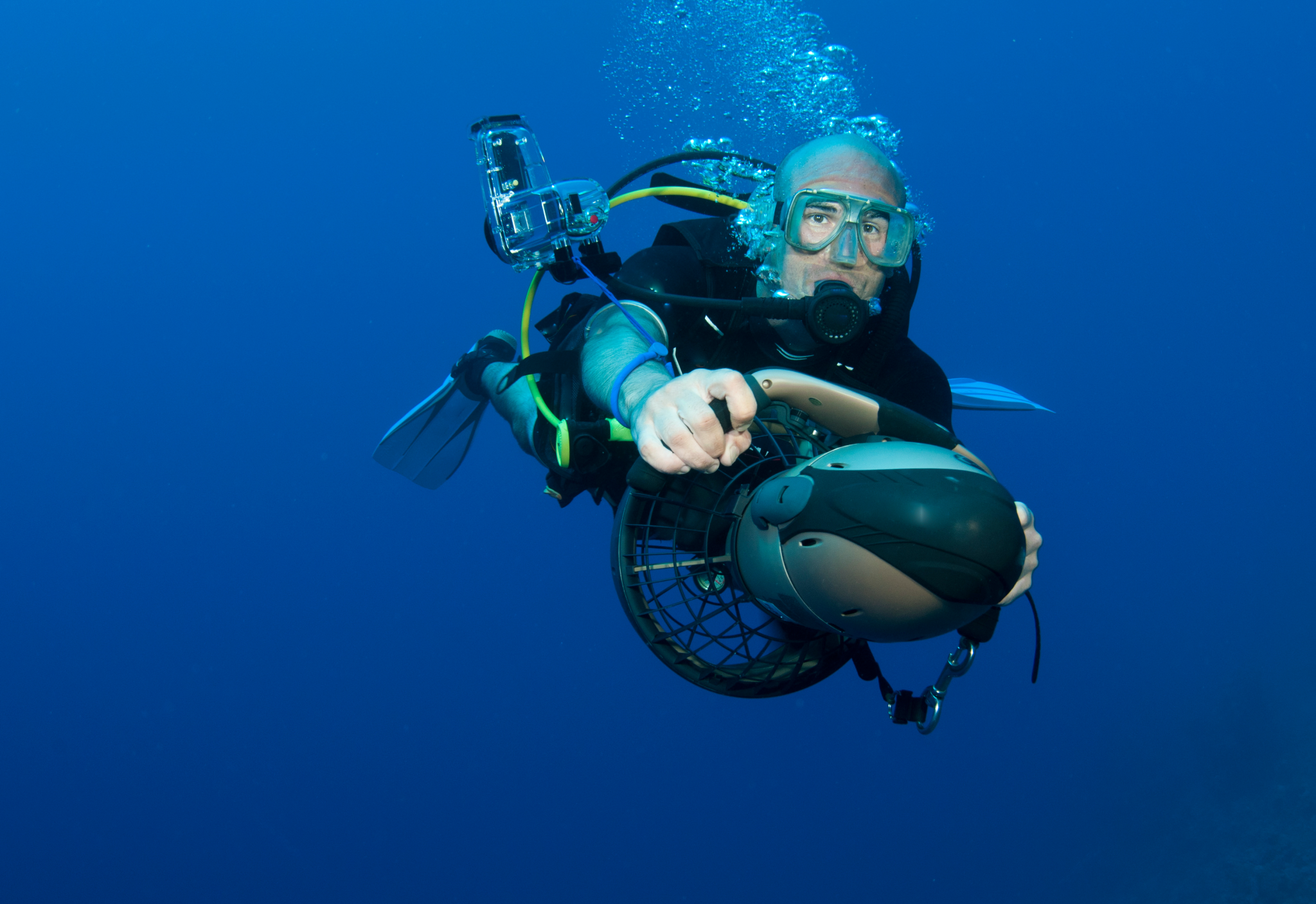
NovoScuba’s platform offers state of the art training programmes ranging from introductory up to professional diving, including various specialties. All programmes meet international standards and ISO certifications are in place. This commitment to shared success, accessibility and positive results for the planet, all at a cost effective and affordable level, is what will make NovoScuba stand out.
“Our deep understanding of traditional pain points for the industry, combined with our digitally native approach positions NovoScuba as a game-changer in dive education. Offering unparalleled initiatives such as student subscription, open access to all course materials, pay as you certify, no stock required, monthly membership payments, payment in local currencies, one-click certifications, and membership freezing, NovoScuba is set to redefine the industry. Available in 13 languages, at launch, the NovoScuba courses are written for the modern divers, with a focus on up-to-date content, interactive learning, and an engaging platform,” Mark Spiers concluded.
NovoScuba is challenging a change in the industry, redefining established traditional systems, and ushering in a new standard of excellence, support, and partnership. Their collaborations with dive stores, pros and underwater enthusiasts won’t demand exclusivity, prioritising earned loyalty, and an understanding that their Member’s success is key to their own.
NovoScuba
Diving Redefined.
-

 News3 months ago
News3 months agoCapturing Critters in Lembeh Underwater Photography Workshop 2024: Event Roundup
-

 Marine Life & Conservation Blogs3 months ago
Marine Life & Conservation Blogs3 months agoCreature Feature: Swell Sharks
-

 Blogs2 months ago
Blogs2 months agoMurex Resorts: Passport to Paradise!
-

 Blogs2 months ago
Blogs2 months agoDiver Discovering Whale Skeletons Beneath Ice Judged World’s Best Underwater Photograph
-

 Gear Reviews3 weeks ago
Gear Reviews3 weeks agoGEAR REVIEW – Revolutionising Diving Comfort: The Sharkskin T2 Chillproof Suit
-

 Gear Reviews3 months ago
Gear Reviews3 months agoGear Review: Oceanic+ Dive Housing for iPhone
-

 News2 months ago
News2 months agoPADI Teams Up with Wellness Brand Neuro to Drive Ocean Change and Create a Blue State of Mind
-

 Marine Life & Conservation2 months ago
Marine Life & Conservation2 months agoSave the Manatee Club launches brand new webcams at Silver Springs State Park, Florida


